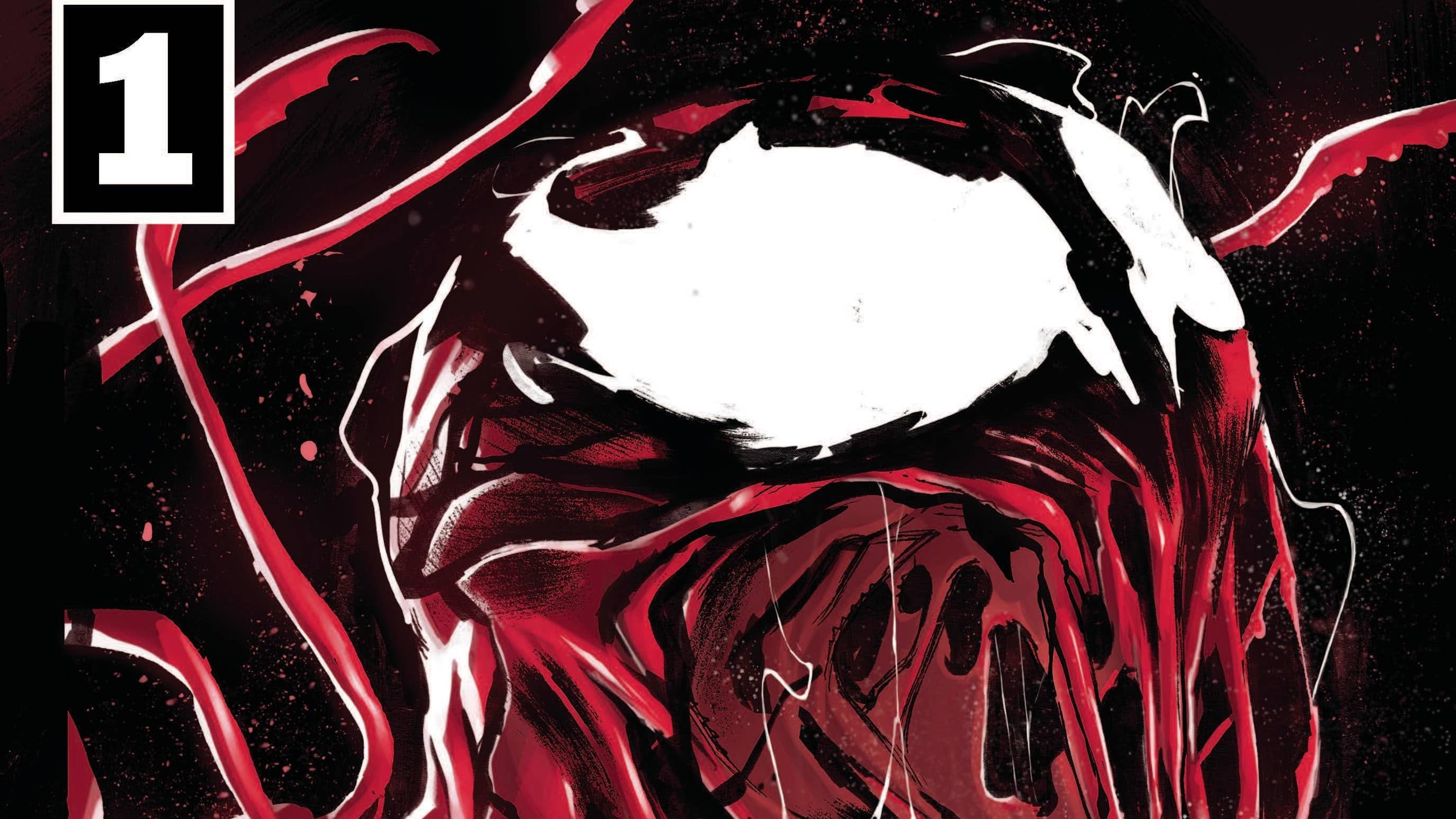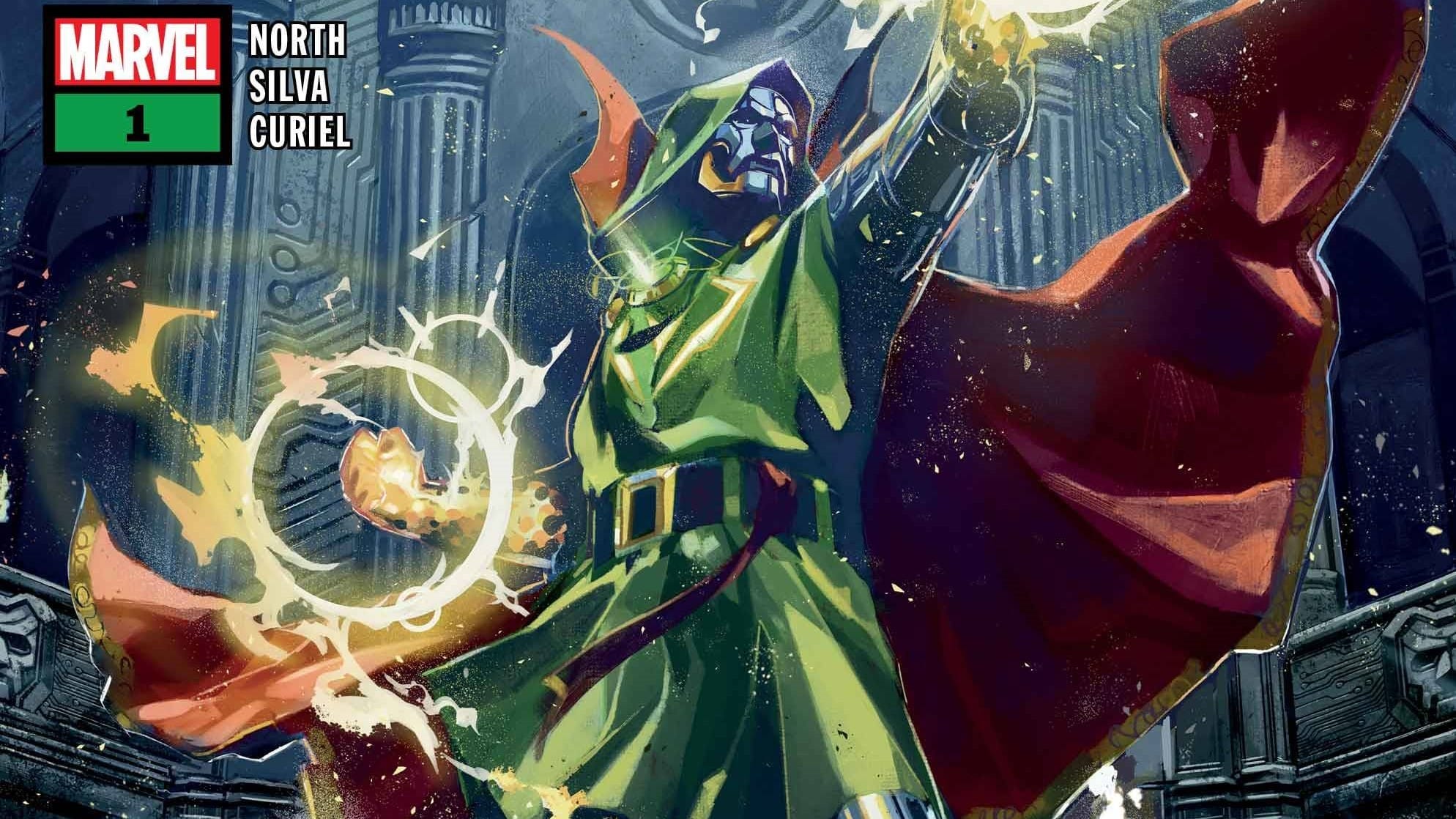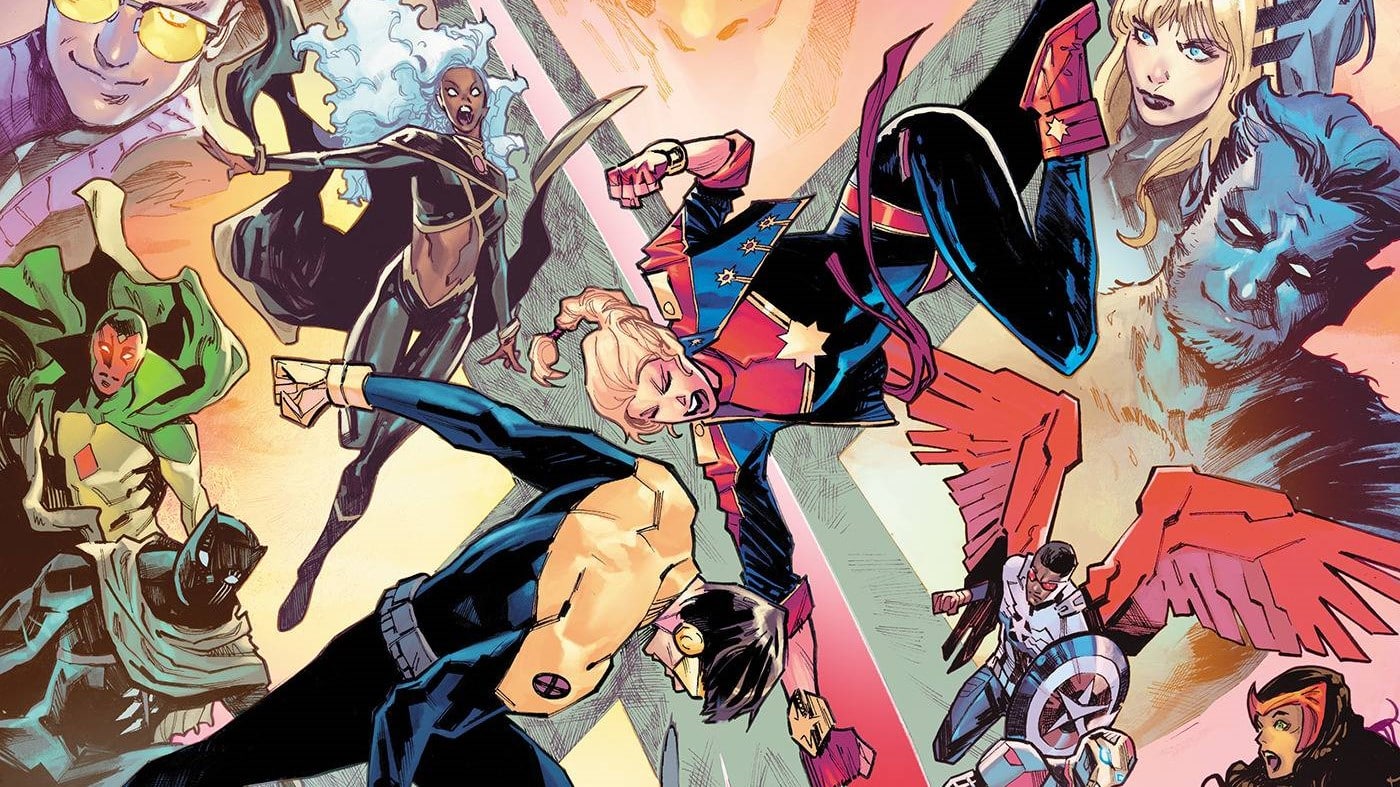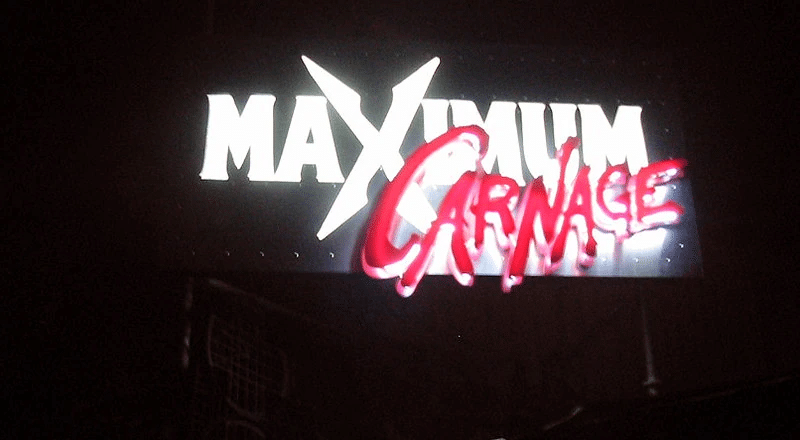It’s an anthology featuring everyone’s favorite scarlet symbiote. When you read this…and you will, it’s gon’ be Carnage. Written by Tini Howard, Benjamin Percy, and Al Ewing with art by Ken Lashley, Sara Pichelli, John McCrea, and colors by Juan Fernandez and Mattia Iacono, letters by Joe Sabino.
Blood, guts, and violence in my Carnage comic? It’s more likely than you think in our initial Carnage: Black, White, and Blood coverage with some high highs and low lows. Let’s get into it with the Symbiote scholars story-by-story below!
“Love Story” – Tini Howard and Ken Lashley
Forrest Hollingsworth: Howard and Lashley’s take on the most murderous Symbiote starts promising but quickly dissolves into something I found unfortunately confused. Opening with a knockdown dragout fight between Carnage and Cloak (of Cloak and Dagger, you know), there’s some good character work here like Cletus being frustrated that “the light” doesn’t have blood – a singular fascination with viscera and violence that suits the character – and some good, visually kinetic moments like the blood red Symbiote overtaking his foes with gross ease that keep things feel taut and unpredictable at least.
When the scenery and scope of the narrative shifts to explore the romantic parallels between Cloak and Dagger and Shriek and Carnage via the story of ancient Roman legionary Lucius Marius, however, things lose focus. The narration, poetic as it is, is too removed from the events of either story to feel tangible, and both the art and coloring are too dense to carry things visually. It’s a story that is interesting in principle, exploring a less obvious, more nuanced take on Cletus, but it’s also one that might be better suited to something like Conan in execution. As the confusion between events, time, and space mounts throughout, the end result of a re-unified Carnage family feels less like a satisfying conclusion and more like an excuse to move on.
“End of the Trail” – Benjamin Percy and Sara Pichelli
Forrest: Dripping in a Cormac McCarthy-esque desolateness, Percy and Pichelli’s story is minimalist and straightforward, but also succinctly successful. Carnage plays the role of a legitimate old west style villain well, tearing a seemingly senseless swath of violence and gore through the scenery and its denizens.
As the warden the story is fixated on approaches a gore infested cave, just the red of blood on the white snow surrounding, we get the impression of something being deeply wrong. Carnage is wrong. Cunning, evil, careless he’s treated like an embodiment of rot overtaking both man and nature in an enthralling way. As he rides away – a hilarious image of a cowboy Carnage – you feel both a sense of hilarity and horror that few others can emulate. It’s a shame about the typo on the final page detracting a bit (mixed metaphors? A missing speech bubble?) but the message is clear nonetheless.
“You Are Carnage” – Al Ewing and John McCrea
Mikey Zee: Ewing brings back his choose-your-own-adventure/comic book fusion from his You Are Deadpool mini, this time imbuing it with a twist. The reader is put in the role of an Agent Venom project recruit tasked with piloting and bonding with the captured Carnage symbiote. McCrea’s strong, contrasty pencils are a delicious marriage between woodcut illustrations and midcentury news strips, which complement the pulpiness of the conceit perfectly. The story unfolds within the framework of a solo storytelling tabletop RPG; design-wise, it reads like a simplified solo version of popular free TRPG Everyone is John by Michael Sullivan. All you need to play is a 6-sided die—or Google’s dice roller for convenience’s sake—and Ewing will guide you through the rest.
The first time I “played,” I am not ashamed to admit I met a bad end that was completely fitting for Venom’s more murderous sibling. However, You Are Carnage gives you ample ability to reset and try another path, even if getting to the good ending is a little difficult by design. The panels along the way are filled with Ewing’s signature comedic flair, but he isn’t afraid to veer into the grotesque. McCrea is able to meet him step for step, even when the action is guided by a tortured joke about John Hurt and maiming by toilet (Carnage is not as funny as it thinks it is). No matter which path you end up on, the story is a well-designed little romp that’s worth the price of admission.







